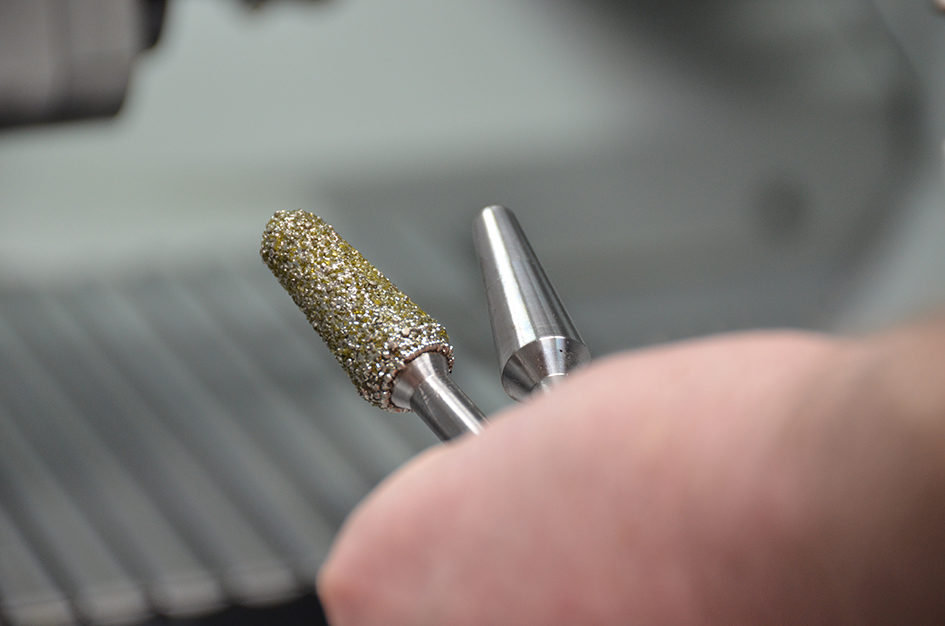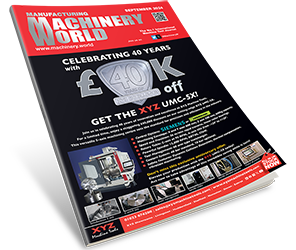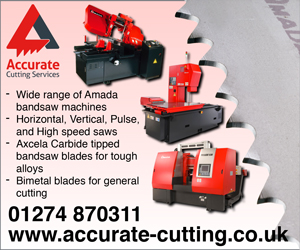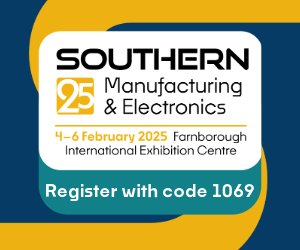Astley Diamond Tools is a small two people business based in Witton, Birmingham that took the plunge and made a significant investment in the latest Low Frequency Vibration (LFV) turn-mill technology from Citizen Machinery UK. And, within just three months of installation, proprietor Ben Astley has been able to transform the firm’s blank turning operations for its diamond tool production and opened a new operational door by using his very competitive sliding head machining platform to provide a sub-contract small part turn-milling service.
Said Mr Astley: “Swarf problems totally controlled our business of machining silver steel blanks to which we then electro-plate diamond finishes and sell direct to customers or through a network of distributors that means our tools can end up being used anywhere in the world.”
Apart from the multitude of advantages he is progressively appreciating from the benefits accruing from the installation of the Citizen Cincom L20-VIIILFV turn-mill centre, he describes an immediate example of a recent batch of 500 rotary diamond burrs that are used to fettle cast iron he produced for a regular Polish customer. He relayed how he had to almost stand by his previous aging Citizen sliding head machine and stop it every five or so parts to clear the tangled bird’s nest of swarf.
He said: “It would take at least 70 hours to produce the batch and now with LFV I can complete the same order well inside 16 hours. As swarf is chipped so finely, the only attention required is to change over the short bar feed and remove completed parts from the outfeed conveyor. Even size and surface finish is totally consistent which gives me total confidence.”
He added: “I can now concentrate on the electro-plating, packaging and other duties such as paperwork, but most surprising is that the new machine has opened a new door in providing customers with a sub-contract turning service. Customers who often just call in to collect parts or give me an order for diamond tools or plating work are immediately impressed by the new machine taking up much of my floor space and are asking me to quote and giving me orders for other turning work.”
He describes an order just completed for hundreds of small collets out of EN24T. “I turn the outer form and drill through and the customer now collects them for slitting and finish grinding,” he said.

Ben Astley has transformed his tool making business following installation of Citizen Cincom L20-VIIILFV for blank turning and the addition of a sub-contract machining service.
LFV is based on initiating selectable sequences programmed at the machine control through ‘G-codes’ to impart the size of chip to be produced. This introduces oscillation to the routine action of the cutting tool through the servo axes of the drive system in the direction of feed. This happens in phases of tens of microns which are precisely synchronised with the rotation of the machine spindle.
The resulting controlled ‘air-cutting’ breaks the swarf into a designated chip size which prevents ‘bird-nesting’ and can be applied to turning, drilling and even threading cycles. LFV can be switched in or out of the programmed cycle as required and helps reduce the on-set of built-up edge on the tool tip, extending its in-cut life. It also allows deeper depths-of-cut and enhances the achievement of improved surface quality through a wiping action of the tool.
Ben’s Astley Diamond Tools was originally set up by his father some 40 years ago, it has a long standing customer base. Ben started to work with his father in 1998 and now runs the operation following his father’s retirement two years ago. The firm produces electro-plated tools in natural diamond, cubic boron nitride (CBN) and synthetic diamond between 3 mm and 20 mmm diameter.
Astley also produces made-to-order internal grinding wheels between 3 mm and 20 mm diameter, routers for opening out gaskets and existing holes, diamond needle files plus electro-plated grinding wheels up to 450 mm diameter for which he turns the blanks on another CNC lathe.
Turning silver steel has always been a controlling factor in the tool production process. In 2001 a used Citizen 16 mm capacity sliding head machine was installed which at the time was a massive step forward and became the firm’s workhorse to produce blanks. He said: “I just cannot believe the difference between the old machine and the new generation Cincom.
The decision to invest was not made lightly but customers were asking for larger diameter tools and Mr Astley saw articles on how LFV technology can influence the cutting of difficult materials. He checked-out Citizen’s website and went along to the Open House in October.
He said; “What really impressed me was the understanding of my needs as a really small turning operation and my concerns over the outlay and returns. They spent time with me and put together a finance package specifically to suit my needs which clinched the deal.”
He is still discovering advantages to the business. He outlines how his firm is not an ‘out-and-out’ cycle time chaser and tends to run the machine at 3,000 revs/min with feed rates of 0.35 mm/rev. But it is the capability to turn in one cycle direct-to-depth that he appreciates. He said: “We use a lot of 20 mm material and can run LFV with 6 mm depth-of-cut using standard carbide tooling without a murmur from the machine.”
Because of the restrictions due to the size of the workshop, the machine is fitted with an IEMCA Elite 220S Superfast short barfeed. He said: “Having the precision of LFV chip control meant I could reduce some of the outlay. For instance, we do not generate smoke in the cycles so we saved on the smoke hood, we did not need high pressure coolant and even the swarf bin. We are able to use our existing swarf bins because we can now precisely control the size of chips being deposited so it is far easier to manage and emptying is not such a regular occurrence.”
What he is also very appreciative of is that he can go into the working area of the machine and come out completely dry because the volume of coolant is far easier to control. Also, he opted for Citizen’s Alkart CNC Wizard programming aid which he maintains is absolutely tailor-made for his needs especially as sometimes he has to support orders for just five tools. This he said: “Means set, run machine, then reset.” Most changeovers take 20 to 30 minutes and his time cycles now vary between 20 secs for a dowel type component to 65 secs for a more complex blank.







